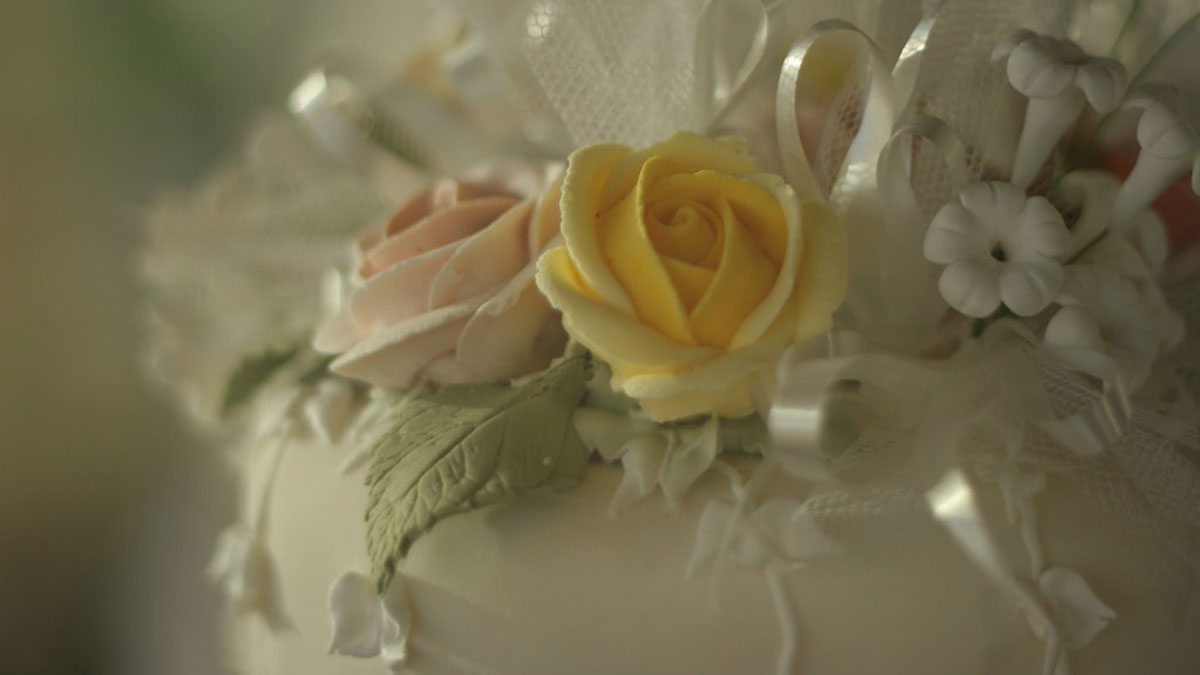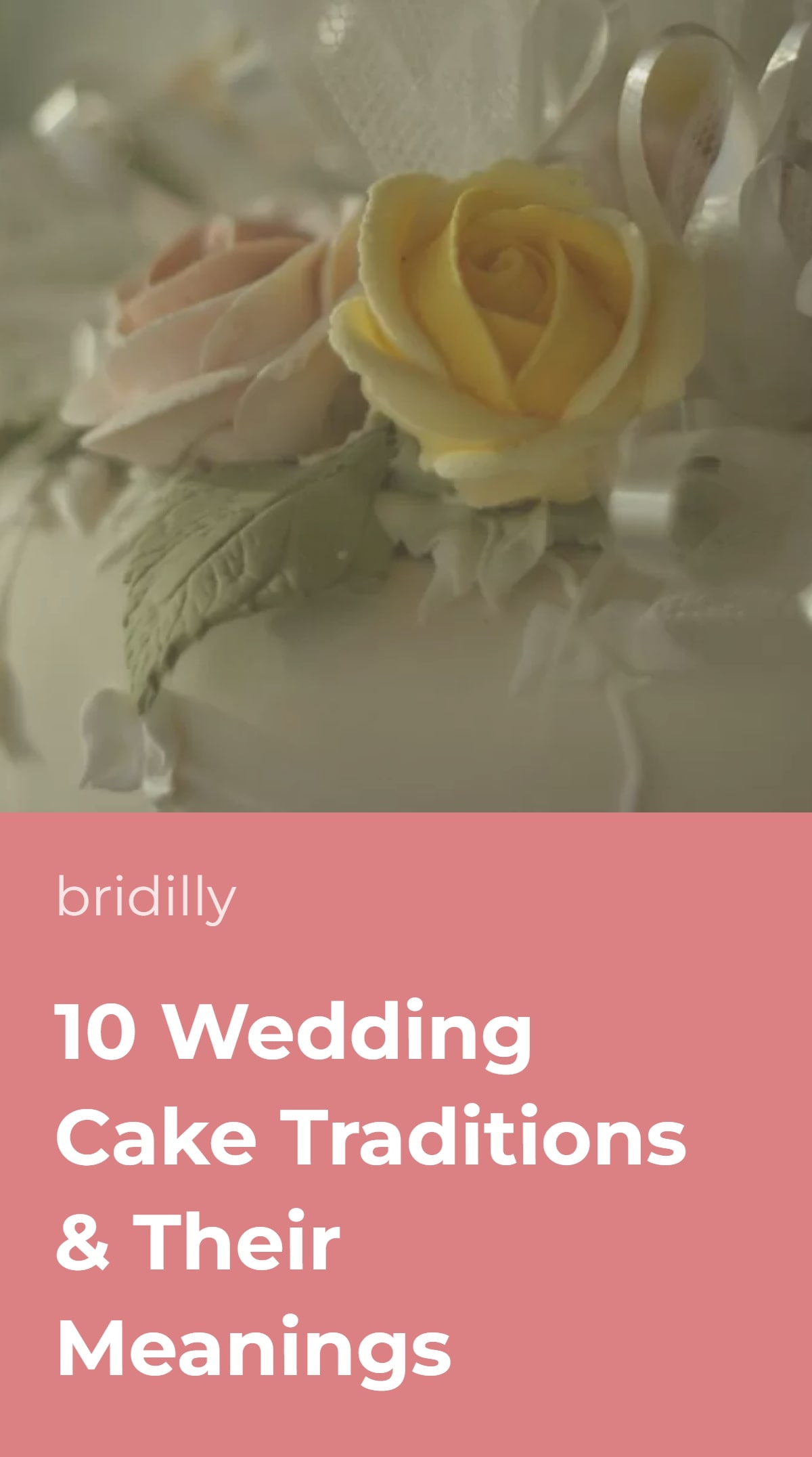The white sugar-coated confectionery served at the end of the reception is always in the spotlight, but not many know about the history of wedding cake traditions.
Meanwhile, many modern American customs date back to the Ancient Roman or Victorian times.
Back in the days, couples also used to cut the cake in front of the guests, feed each other the first piece, and preserve the top tier, but the meaning behind these customs evolved.
These days, couples have more freedom regarding the choice of their wedding cake color, shape, number of tiers, and flavor, but the tradition of a white three-tier vanilla cake stands strong.
However, wedding cakes aren’t the same around the world. Other countries have truly fascinating wedding cake customs embracing their cultural heritage.
Table of Contents [show]
1. Preserving The Top Tier
The tradition of preserving the top tier of a wedding cake originated in England. Tiered cakes became a norm in the Victorian era, and each level served a specific purpose.
Couples used to save the top tier of their cake to eat it at their child’s christening. At that time, to have a child shortly after the wedding was typical. Women were expected to give birth within a year of marriage.
Historians suggest that the primary reason for this practice was to save money on buying a new cake.
Another possible explanation is that couples were believed to be lucky on their wedding day, and eating the wedding cake brought luck to their child.
Nowadays, couples traditionally preserve the top tier of their wedding cake to eat on their first anniversary rather than for the child’s christening.
After all, most people prefer to have children later, and cakes don’t have an eternal shelf life.
2. Cutting The Cake Together in Front of Guests
Nearly every modern couple has a picture of them cutting the wedding cake together, but not many know how the tradition originated. Meanwhile, its history and meaning aren’t as sentimental as you may imagine.
Back in the day, women were expected to get married as virgins. The bride used to cut the cake alone, symbolizing the loss of her virginity.
That’s not the most romantic wedding cake tradition. However, nowadays, people assign a different meaning to the practice of cutting the cake together – it represents the couple’s unity and shows they can work as a team.
3. The Groom’s Cake
American couples often have two wedding cakes – the main cake and the groom’s cake. The latter is typically smaller, has a different flavor than the primary cake, and, unsurprisingly, celebrates the groom.
Like many American wedding traditions, the groom’s cake has roots in England. In the 17th century Yorkshire, couples used to have a bride’s pie and a groom’s pie. However, they didn’t simply eat each their pies.
The bride would only eat a piece of her pie and throw the rest over her head, symbolizing how much she was ready to give up for her loved one.
On the other hand, the groom was expected to eat the entire pie and throw the empty plate over his head. The more pieces the plate broke into, the more years the couple would live happily together.
At first, the groom’s cake was always a fruit pudding, but it evolved into a chocolate cake with fruit filling over time.
Interestingly, the bride and groom were responsible for baking the pie themselves. This custom likely would intimidate many men (and women) nowadays.
4. Piece Of Cake Under Pillow
The groom’s cake traditions aren’t limited to throwing a plate over one’s head.
Another superstition from Yorkshire states that if a single woman slept with a slice of the groom’s cake under her pillow, she would see her future husband in a dream.
For this reason, the couple used to pack leftovers of the groom’s cake and hand them to single women at their wedding. Of course, if there were any leftovers since the groom had a valid excuse to eat the entire cake alone.
The custom made more sense back in the day because fruitcakes were much firmer than modern buttercream wedding cakes.
Nowadays, some couples hand tiny charms with replicas of their wedding cakes to unmarried women to honor the tradition.
5. Feeding Each Other Cake
A picture of the couple feeding each other cake typically follows a photo of them cutting the cake together in wedding albums. Thankfully, this tradition has more sentimental meaning.
The custom originated in Ancient Roman times, so it’s one of the oldest wedding traditions in the U.S., much older than wearing a white wedding gown.
The practice of feeding each other cake represents the couple as a unified team committed to caring about each other. The meaning behind the tradition didn’t change a bit throughout the centuries.
While the custom is meaningful, you’re by no means obliged to observe it. The tradition often gets messy, and many couples refrain from it, fearing getting their expensive bridal attires dirty.
6. White Wedding Cake
White is a traditional wedding color, but the reason wedding cakes are white isn’t as apparent. A common misconception is that wedding dresses and cakes are white because they represent innocence and purity.
However, historically, white color was used to showcase the bride’s family’s social status.
White cake icing was extremely expensive, and only affluent families could afford it. The lighter the cake’s color, the wealthier the family appeared to the wedding guests.
Furthermore, English couples of the 17th-19th centuries used to have two cakes, the bride’s and the groom’s cake. The bride’s cake was meant to represent the bride and was traditionally white, and the groom’s had to be dark.
Over time, the rules became less strict, and modern wedding cakes can be of any color. Still, many couples believe that the cake’s base should be white, and the decorations should match the wedding’s color theme.
7. Wedding Cake Charms
The tradition of wedding cake charms, also known as wedding cake pulls, is widespread in the southern states. However, like most other modern wedding customs, it has roots in England rather than the U.S.
Historians have traced the custom to the Victorian era when a bride would place ribbons with tiny charms under her cake. The bride’s unmarried friends would then pull the ribbons before the cake was cut.
The charms were different, and each one had its unique meaning. For example, a ring charm meant that a woman would soon get married, while a money bag charm allegedly brought financial security to whoever pulled it.
A clover or horseshoe symbolized luck, a rocking chair – long life ahead, and a high chair – soon childbirth. Modern brides often add more charms, such as chili pepper to represent passion or a car for travel.
The charms and their meanings evolved over time, but the basics of the tradition remained unchanged throughout the centuries. Charms aren’t baked into the cake but hidden between the layers or underneath the bottom layer for easy pulling.
8. Cake Toppers
One may think that wedding cake toppers serve a solely decorative purpose, but historically, they carried deep symbolic significance.
Legend says that centuries ago, a baker’s daughter asked her dad to make a symbol of her love that everyone could see.
The baker then created two figurines resembling his daughter and the groom and placed them on top of the cake. The bride found this sentimental, and cake toppers became a widespread custom.
The history of the cake topper tradition is a bit vague – no one knows where or when exactly this happened.
However, the meaning behind the custom is more important than historical details, and many couples embrace the tradition to this day.
9. Many Tiers
Wedding cakes come in all shapes and sizes, but a three-tiered cake is a traditional choice. Tiered cakes became widespread during the Victorian era.
The couple used to serve the bottom tier at the wedding, hand off the middle tier for favors, and preserve the top tier to eat for their child’s christening.
Nowadays, the number of tiers largely depends on the guest count and the couple’s preference. Some cakes even have seven tiers! However, most couples don’t distinguish between the tiers and serve the entire cake at the reception.
10. Wedding Cake Traditions in Other Countries
Wedding cake traditions around the world differ. For instance, couples in Belgium and France typically serve the croquembouche cake rather than a white three-tiered cake.
Croquembouche is a French dessert made with puff pastry filled with cream, shaped like a cone.
Danish and Icelandic couples prefer more modest wedding cakes shaped like a wreath. The circular shape represents eternal love.
The cakes consist of multiple differently sized almond pastry rings placed on top of each other and decorated with white icing.
According to a Danish wedding cake superstition, the couple should remove the cake’s top layer along with as many additional layers as many children they want to have.
Swedish couples favor conical cakes known as spettekaka, made from meringue. Traditionally, one spettekaka should stand on the bridal table, and the second one should be broken over the bride’s head for luck.
Slavic couples traditionally eat korovai, a large round fruitcake decorated with symbols of love made from icing. Members of both families should participate in the baking because korovai represents unity.
















No Comments Add one
Leave a Comment